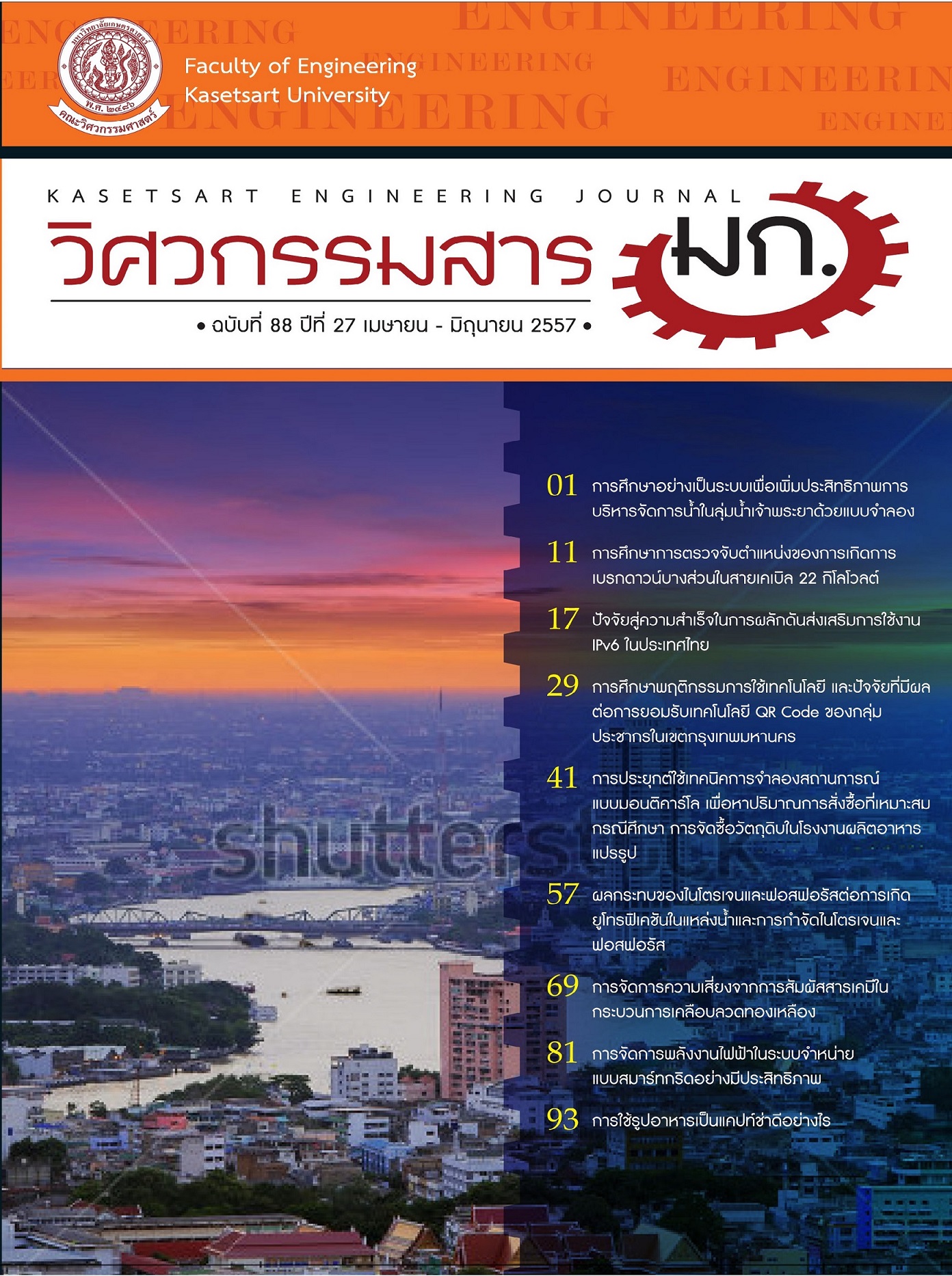การจัดการพลังงานไฟฟ้าในระบบจำหน่ายแบบสมาร์ทกริดอย่างมีประสิทธิภาพ
Keywords:
การจัดการพลังงานไฟฟ้า, ระบบจัดเก็บพลังงานไฟฟ้าด้วยแบตเตอรี่, สมาร์ทกริด, Electrical Energy Management, Battery Energy Storage System, Smart GridAbstract
บทความนี้เสนอวิธีการจัดการพลังงานไฟฟ้าในระบบจำหน่าย 22 เควี ที่มีแหล่งผลิตไฟฟ้าจากพลังงานแสงอาทิตย์ โดยหาขนาดและตำแหน่งติดตั้งระบบจัดเก็บพลังงานไฟฟ้าด้วยแบตเตอรี่ที่เหมาะสม สำหรับใช้ในการจัดเก็บพลังงานไฟฟ้าในช่วงที่มีการใช้ไฟฟ้าต่ำสุด และจ่ายกลับคืนให้กับระบบในช่วงที่มีการใช้ไฟฟ้าสูงสุด เพื่อลดกำลังไฟฟ้าสูงสุดของระบบไม่ให้เกิน 8 MW โดยใช้โปรแกรม DIgSILENT ในการหาขนาด และตำแหน่งติดตั้งที่เหมาะสม วิเคราะห์การไหลของกำลังไฟฟ้าผ่านแบบจำลองระบบไฟฟ้า โดยการสุ่มตำแหน่งของระบบจัดเก็บพลังงานไฟฟ้าด้วยแบตเตอรี่จนได้ตำแหน่งที่ทำให้ระบบมีพลังงานไฟฟ้าสูญเสียน้อยที่สุด การศึกษาแบ่งเป็น 48 กรณี ผลลัพธ์ที่ได้จะถูกนำมาวิเคราะห์สรุปผล รวมทั้งเสนอแนะวิธีการแก้ปัญหาและวางแผน เพื่อให้เกิดการตอบสนองต่อนโยบายการส่งเสริมการใช้พลังงานหมุนเวียนและสอดรับกับการก้าวเข้าสู่ระบบไฟฟ้าแบบสมาร์ทกริด ของการไฟฟ้าส่วนภูมิภาคที่จะเกิดขึ้นในอนาคตต่อไป
Effective Energy Management in Smart Grid Distribution System
This paper presents a method for energy management of the 22-kV distribution power system including the distributed generation from solar PV systems. The proposed method is applied to determine the appropriate sizing and placement of the battery energy storage system (BESS) with the constraints that the BESS is charged when the power demand is low and is discharged when the power demand is high as well as the maximum power demand is kept within the limit of 8 MW. In this study, the DIgSILENT is used to solve the problem of sizing and placement of the BESS, and to analyze the power flow of the study power system by varying the placement of the BESS until the system power loss is minimum. The case study is divided into 48 possible scenarios. Finally, the obtaining results is analyzed in order to find the promising solutions to solve the issues and to be used as the planning guidelines for power system planning with the smart grid environment of the Provincial Electricity Authority (PEA) in near future.


